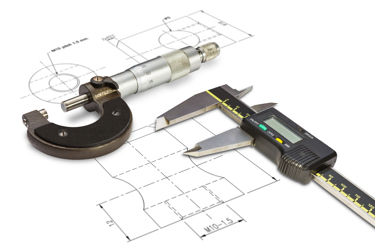Who Is Shaping The Direction Of Metrology?

By John Oncea, Editor

Government involvement in metrology can boost innovation, collaboration, and public trust, as well as foster economic growth. However, it also poses challenges like compliance costs and trade barriers.
Supply chain disruptions caused by COVID-19 resulted in a steep decline in the manufacturing of semiconductors in the U.S., furthering a two-decade trend fueled by substantial subsidies offered by foreign governments to attract semiconductor manufacturers to their countries. These subsidies can take various forms such as financial incentives, tax breaks, low-interest loans, infrastructure development, and favorable regulatory policies.
To address this issue, the U.S. government passed legislation of its own – the CHIPS and Science Act – to kickstart domestic manufacturing of semiconductors by allocating $280 billion in new funding over the next 10 years. Investing in research and development, fostering innovation, creating a skilled workforce, and providing financial support to the semiconductor industry could help regain market share and enhance their competitiveness in the global semiconductor landscape.
According to Semiconductor Engineering, “While all of these investments in semiconductor manufacturing promise to bolster the supply of chips, building complex new facilities required for the next generations of manufacturing technology also poses significant challenges. There is a need for extensive research and development to address critical areas in achieving high-volume manufacturing (HVM) for the advanced process technologies these fabs will incorporate.”
One such area is metrology, especially in the U.S., where a growing demand for reliable and accurate methods to measure and analyze the unique materials and structures incorporated into these chips exists. “There is a need to keep pushing metrology research investments because that is where you gain yield,” Semiconductor Engineering quotes Samuel Lesko, senior director and general manager at Bruker Nano Surfaces & Metrology as saying. “You can’t produce without metrology.”
Legal Metrology Provides Confidence
Legal metrology is a branch of metrology that deals with regulations and requirements for measurements used in trade and commerce. Governments enact laws and regulations to ensure that commercial transactions are fair and transparent. Legal metrology covers aspects such as weighing and measuring instruments used in markets and ensures they meet specified accuracy requirements.
The government also enforces laws and regulations related to measurement, oversees market supervision, and invests in the necessary infrastructure to maintain measurement accuracy. Additionally, the government supports national manufacturing industries, sets measurement standards, offers calibration services, and ensures compatibility with international trade standards in other countries.
The U.S. CHIPS R&D Metrology Program, administered by the National Institute of Standards and Technology (NIST), published “Metrology Gaps in the Semiconductor Ecosystem” as a way to better achieve these outcomes. “It combines two years of research, strategic planning, organizational development, and stakeholder engagement to identify 10 priority areas under seven grand challenges, with an additional 32 “Path Forward” elements that provide technical roadmaps to overcome those challenges,” writes Semiconductor Engineering.
Beyond legal metrology, governments are influencing and shaping metrology in other ways, including:
- Regulation and Standards: Governments often establish regulatory bodies and set national standards for measurements. These standards ensure measurement uniformity and accuracy, promoting fair trade and compatibility in various industries.
- Consumer Protection: Governments use metrology to protect consumers from fraudulent practices, such as inaccurate weighing or measuring instruments in markets. By implementing strict measurement standards, governments ensure that consumers receive the correct amount or quantity of products they purchase.
- Public Safety and Health: In sectors like healthcare and transportation, accurate measurements are critical for public safety and health. Governments set standards for medical devices, drug dosages, vehicle safety, and emissions, among others, to protect citizens and the environment.
- Research and Development Support: Governments often invest in metrological research and development to advance measurement technologies, improve accuracy, and support innovation in various industries. This can lead to the development of new measurement methods and instruments that benefit both private companies and public institutions.
- International Cooperation: Metrology is an international endeavor, and governments participate in global metrology organizations, such as the International Bureau of Weights and Measures (BIPM) and the International Organization of Legal Metrology (OIML). Through these organizations, governments collaborate on the development and mutual recognition of measurement standards, facilitating international trade and cooperation.
- Infrastructure Investment: Governments may allocate funds to establish and maintain metrology laboratories, calibration facilities, and certification bodies. These investments strengthen the metrological infrastructure and ensure that measurements across the country are traceable to internationally recognized standards.
- Industry Regulations: In sectors like manufacturing, aerospace, and energy, governments establish metrological regulations to ensure product quality, safety, and compliance with industry-specific standards.
Although government regulation of metrology is important, it also can create challenges. For instance, it can be costly and difficult to comply with, inflexible, and slow to adapt to technological advancements. Additionally, it can create trade barriers between countries, lead to inconsistent compliance, and result in complex regulatory frameworks.
To overcome these issues, governments should aim to strike a balance between protecting consumers, ensuring fair competition, and accommodating industry-specific needs. This can be achieved through regular reviews and updates of regulations and international cooperation to harmonize standards. By doing so, some of the challenges associated with government regulation of metrology can be addressed.
By actively shaping the direction of metrology, governments can foster economic growth, innovation, and international collaboration while safeguarding the interests of citizens and promoting public trust in measurements.
